Understanding Money Market Funds: Your Guide to Safety, Liquidity, and Returns
Are you looking for a safe yet productive place to park your hard-earned cash in today’s unpredictable financial world? Perhaps you’re building an emergency fund, saving for a short-term goal, or simply seeking better returns than a traditional bank savings account offers. Money Market Funds (MMFs) often emerge as a compelling solution, offering a unique blend of capital preservation, accessible liquidity, and competitive returns. 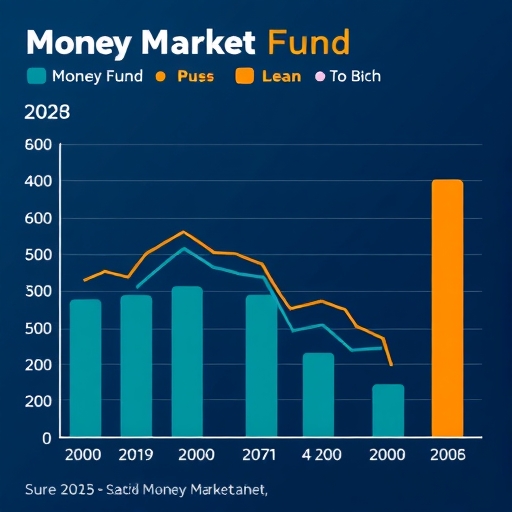 In this comprehensive guide, we will delve into the foundational mechanics of MMFs, explore their diverse benefits, candidly discuss their inherent risks, and compare them against other short-term investment vehicles. Our goal is to equip you with the knowledge to make informed financial decisions and confidently manage your short-term wealth.
In this comprehensive guide, we will delve into the foundational mechanics of MMFs, explore their diverse benefits, candidly discuss their inherent risks, and compare them against other short-term investment vehicles. Our goal is to equip you with the knowledge to make informed financial decisions and confidently manage your short-term wealth.
In today’s dynamic financial landscape, the appeal of Money Market Funds is growing, particularly due to several key factors:
- Current interest rate environments have made MMF yields significantly more attractive than in previous years, offering a compelling alternative to traditional low-yield savings.
- Increasing economic uncertainty prompts many investors to seek safer havens for their capital, prioritizing preservation and liquidity over aggressive growth.
- The ease of access and integration with brokerage platforms make MMFs a convenient choice for managing operational cash or setting aside funds for short-term liabilities.
The Core of Money Market Funds: How They Work and What They Hold
Let’s start by demystifying what a Money Market Fund actually is. Imagine a mutual fund that doesn’t invest in stocks or long-term bonds, but instead pools money from many investors to buy highly liquid, short-term debt instruments. That’s essentially what an MMF does. Their primary objectives are crystal clear: **capital preservation** (protecting your initial investment), **liquidity** (making your money easily accessible), and generating modest, steady returns. Unlike a savings account where your money sits directly with a bank, an MMF invests your cash across a diversified portfolio of very short-term, high-quality assets.
What exactly do these funds hold? Typically, MMF portfolios consist of instruments with maturities under one year, often within a much shorter timeframe like 90 to 180 days. This short duration is key to their stability. The types of securities include:
- Treasury Bills (T-bills): These are short-term debt obligations issued by the U.S. government. Because they are backed by the full faith and credit of the government, T-bills are considered among the safest investments available, carrying extremely low risk of default.
- Commercial Paper (CP): Issued by corporations to meet short-term liabilities, commercial paper carries a slightly higher risk than T-bills, but MMFs typically invest only in commercial paper from financially strong companies with high credit ratings. Often, this commercial paper is further safeguarded by being asset-backed or supported by strong bank guarantees, leading to top-tier credit ratings such as R1-high by Morningstar DBRS, as highlighted by fund managers like Raj Lala of Evolve ETFs.
- Certificates of Deposit (CDs): These are time deposits with banks, but in the context of MMFs, they are typically short-term and highly rated.
- Repurchase Agreements (Repos): Short-term agreements to sell and then repurchase securities, often overnight, providing very short-term lending.
To further illustrate the diversity within Money Market Funds, here’s a breakdown of their primary types:
| Fund Type | Primary Holdings | Risk Profile | Typical Investor |
|---|---|---|---|
| Government Money Market Funds | U.S. Treasury bills, notes, and other government agency securities. | Extremely Low (highest safety, often exempt from state/local taxes). | Risk-averse individuals, those prioritizing principal safety, tax-conscious investors. |
| Prime Money Market Funds | Commercial paper, corporate bonds, CDs, repurchase agreements (from highly-rated entities). | Low to Moderate (slightly higher yield potential, but also slightly higher credit risk). | Investors seeking slightly higher yields than government funds, comfortable with minimal additional risk. |
| Tax-Exempt Money Market Funds | Short-term municipal bonds issued by state and local governments. | Low (income is exempt from federal and sometimes state/local taxes). | High-income earners in higher tax brackets, particularly those seeking state tax advantages. |
You might wonder how an MMF maintains a stable unit price, often pegged at $1, $10, $50, or $100. This is achieved through specific accounting methods where securities are generally held to maturity. Interest payments accumulate and are typically paid out monthly. This causes a slight, incremental increase in the unit price before it resets, or the interest is distributed to you, keeping the principal stable. For instance, a fund like the Vanguard Federal Money Market Fund (VMFXX) is often used as a settlement fund in brokerage accounts precisely because of its stability and liquidity.
Unlocking the Advantages: Capital Preservation, Liquidity, and Enhanced Returns
Now that we understand the mechanics, let’s explore why Money Market Funds are often lauded as a smart choice for certain financial goals. What benefits do they offer you as an investor?
- Exceptional Capital Preservation: The primary goal of MMFs is to protect your initial investment. By focusing on high-quality, short-duration debt instruments, these funds are designed to minimize the risk of losing your principal. While not entirely risk-free (a point we will discuss shortly), they are significantly less volatile than stock or bond funds, making them a safe harbor for your cash.
- High Liquidity: One of the most attractive features of MMFs is their high liquidity. What does this mean for you? It means you can typically access your money quickly, often within one to two business days, without incurring penalties or being subject to lock-in periods, unlike Fixed Deposits (FDs). This makes MMFs ideal for your emergency fund or for parking cash you might need to use in the near future.
- Superior Returns Compared to Traditional Savings Accounts: While MMFs aren’t designed for aggressive growth, they generally offer better yields than traditional bank savings accounts. In a rising interest rate environment, MMF yields can quickly adjust upwards, providing attractive returns on your idle cash. Many funds frequently yield 3% or more, positioning them favorably against inflation and making them a more productive avenue for temporary cash holdings.
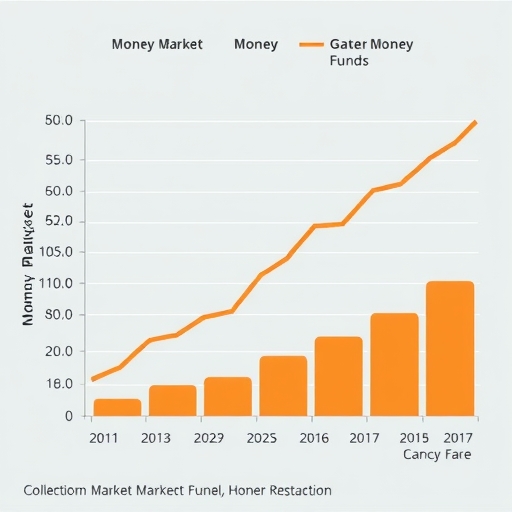
- Portfolio Diversification: Even conservative investors need diversification. MMFs serve as a stable, low-risk component in a broader investment portfolio. They can help balance out the volatility of riskier assets like stocks or long-term bonds, providing a steady foundation. Furthermore, by holding cash in an MMF through a brokerage, you can effectively spread your cash holdings beyond the typical deposit insurance limits offered by a single bank.
As Rob Carrick from The Globe and Mail has noted, MMFs are “where the safe cash is” when interest rates are favorable. They are a practical tool for managing your financial present and preparing for your immediate future.
Beyond these core advantages, MMFs also provide valuable benefits for financial planning:
- They serve as an excellent holding place for funds awaiting deployment into longer-term investments, ensuring your money continues to earn a return rather than sitting idle.
- For businesses, MMFs offer a secure and liquid option for managing working capital, ensuring funds are available for payroll, operating expenses, and other short-term needs.
- Many financial advisors recommend MMFs as a component of a balanced portfolio, providing a low-volatility anchor that can help mitigate overall portfolio risk during market downturns.
Confronting the Caveats: Understanding Money Market Fund Risks
While Money Market Funds offer compelling advantages, it’s crucial to approach any investment with a clear understanding of its potential downsides. Are MMFs truly risk-free? Not entirely. While generally considered low-risk, they are not without their challenges.
Here are the key risks and limitations you should be aware of:
- Lack of Deposit Insurance: This is perhaps the most critical distinction. Unlike traditional bank savings accounts or Money Market Accounts (MMAs) which are often insured by agencies like the Federal Deposit Insurance Corporation (FDIC) in the U.S. or similar guarantees in other countries, MMFs are generally NOT deposit-insured. This means that if the fund itself were to fail or an issuer within its portfolio were to default catastrophically, your principal is not guaranteed by the government. However, if you hold MMFs in a brokerage account, you might have coverage from the Securities Investor Protection Corporation (SIPC), which protects against broker failure, not investment value loss.
- Interest Rate Risk: Money Market Funds are sensitive to changes in interest rates. If interest rates fall, the yields offered by MMFs will also typically decrease, as the fund reinvests maturing securities at lower rates. Conversely, rising rates can boost returns, but existing securities might see a slight temporary decline in value, though this is often mitigated by their short maturity periods.
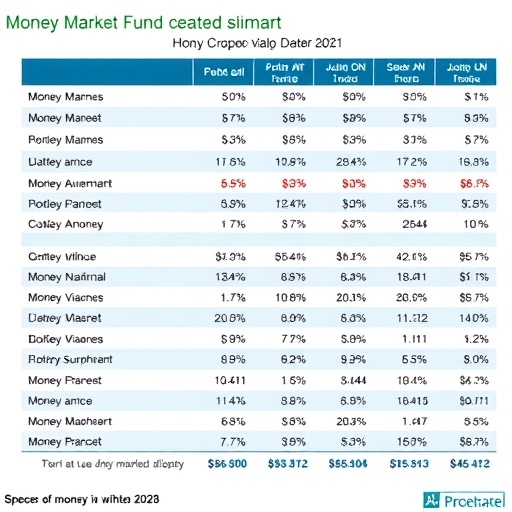
- Inflation Risk: While MMFs often offer better returns than savings accounts, their modest yields may not always keep pace with inflation, especially during periods of high price increases. If your returns are lower than the inflation rate, your purchasing power could erode over time, meaning your money buys less in the future.
- Credit/Default Risk: Although MMFs invest in highly-rated debt, a small risk always exists that an issuer of commercial paper could default on its payments. While rare due to stringent credit quality requirements, such an event could impact the fund’s Net Asset Value (NAV) and potentially lead to a loss for investors.
- Market Liquidity Risk: In severe financial crises, such as the Global Financial Crisis of 2008-09, the market for short-term debt instruments can freeze up. During such periods, MMFs might face challenges selling assets quickly to meet large redemption requests, potentially limiting redemptions or, in rare cases, causing the unit price to “break the buck” (fall below its stable value). Regulatory bodies like the U.S. Securities and Exchange Commission (SEC) have implemented significant reforms in 2016 and further amendments in 2023 to bolster the resilience and safety of MMFs, particularly concerning liquidity management. These reforms include provisions for institutional MMFs to impose liquidity fees or redemption gates during periods of extreme market stress. Government money market funds, which invest exclusively in federally-backed assets, are generally exempt from these fees and gates due to their inherent safety and liquidity.
Understanding these risks is not meant to deter you but to ensure you make informed decisions. MMFs are generally safe, but “safe” doesn’t mean “risk-free.”
To put the returns of Money Market Funds into perspective, here’s an illustrative comparison of average yields over different periods, highlighting their competitive edge:
| Asset Class | Average Yield (Recent High-Rate Period) | Average Yield (Low-Rate Period) | Key Characteristic |
|---|---|---|---|
| Money Market Funds (MMFs) | 4.5% – 5.5% | 0.05% – 0.5% | Yields adjust with market rates, generally higher than traditional savings. |
| Traditional Bank Savings Accounts | 0.01% – 0.5% | 0.01% – 0.1% | Very low, often slow to adjust to market rate changes. FDIC-insured. |
| High-Yield Savings Accounts (HYSAs) | 3.5% – 4.5% | 0.5% – 1.0% | Better than traditional savings, but can still lag MMFs in rising rate environments. FDIC-insured. |
Note: These figures are illustrative and actual yields can vary significantly based on market conditions, fund management, and specific financial institutions. Always check current rates.
MMFs in Context: Comparing Against Other Short-Term Investment Options
With so many options for short-term savings, how do Money Market Funds stack up against alternatives? Let’s compare them to some other popular choices to help you choose wisely.
| Feature | Money Market Funds (MMFs) | High-Interest Savings Account (HISA) ETFs | Investment Savings Accounts (ISAs) | Fixed Deposits (FDs) | Money Market Accounts (MMAs) |
|---|---|---|---|---|---|
| What it is | Mutual fund investing in short-term debt. | ETF holding bank deposits. | Savings account offered by investment firms. | Bank deposit with fixed term & rate. | Bank-offered, interest-bearing deposit account. |
| Deposit Insurance | Generally NO (SIPC coverage for broker failure, not value loss). | YES (indirectly, as underlying deposits are insured). | YES (covered by deposit insurance like CDIC/FDIC). | YES (covered by deposit insurance like CDIC/FDIC). | YES (FDIC insured in the U.S.). |
| Liquidity | High (1-2 business days for redemption). | High (can trade daily on exchange). | High (typically accessible within 1-2 days). | Low (locked in for term, penalties for early withdrawal). | High (can withdraw any time, often with limits). |
| Typical Returns | Generally higher than bank savings, adjust with market rates (e.g., 3%+). | Good, but often slightly lower than MMFs (e.g., around 2.6%). | Comparable to HISA ETFs (e.g., around 2.6%). | Fixed for term, can be good for longer lock-ins. | Better than standard savings, but often lower than MMFs. |
| Risk Profile | Low (interest rate, inflation, credit, market liquidity risk). | Very Low (primarily bank credit risk, but insured). | Very Low (primarily bank credit risk, but insured). | Very Low (bank credit risk, but insured). | Very Low (bank credit risk, but insured). |
| Best For | Emergency funds, short-term goals, parking surplus cash. | Ultra-conservative cash parking, accessible funds. | Conservative savings, portfolio cash component. | Specific future expenses where cash can be locked up. | Daily banking with better interest, accessible funds. |
As you can see, each option has its niche. While HISA ETFs and ISAs offer even lower risk due to deposit insurance, they may provide slightly lower yields than MMFs. Fixed Deposits lock up your money for a set period, sacrificing liquidity for a guaranteed rate. Money Market Accounts, while sounding similar, are bank products, meaning they are FDIC-insured deposit accounts, distinct from MMFs which are investment funds.
When considering an MMF, it’s beneficial to evaluate specific characteristics to ensure it aligns with your financial goals:
- Expense Ratio: Look for funds with low expense ratios, as these fees directly impact your net returns. Even small differences can add up over time.
- Yield History: While past performance doesn’t guarantee future results, reviewing a fund’s yield history can offer insight into its responsiveness to interest rate changes and its overall consistency.
- Fund Type: Decide whether a Government, Prime, or Tax-Exempt fund best suits your risk tolerance and tax situation. Government funds offer the highest safety, while Prime funds may offer slightly higher yields.
- Minimum Investment: Check the fund’s minimum initial and subsequent investment requirements to ensure they fit your budget.
Practical Strategies and Tax Implications for MMF Investors
Who are Money Market Funds ideal for, and how can you integrate them into your financial strategy?
MMFs are particularly suited for:
- Conservative Investors: If your priority is to protect your principal over aggressive growth, MMFs are an excellent choice.
- Short-Term Investment Horizons: They are perfect for money you plan to use within a year, such as savings for a down payment, a vacation, or education expenses.
- Building an Emergency Fund: The high liquidity and capital preservation make MMFs an ideal place for your emergency savings, allowing quick access when unexpected expenses arise.
- Temporarily Parking Surplus Cash: If you have a lump sum from a bonus, property sale, or inheritance that you haven’t decided where to invest long-term, an MMF provides a productive temporary home.
- Corporate and Institutional Investors: Businesses often use MMFs for managing their short-term operational funds and maintaining liquidity.
To help you in selecting the right Money Market Fund for your needs, consider the following checklist:
| Checklist Item | Consideration | Why it matters |
|---|---|---|
| Yield (7-day SEC Yield) | Compare current yields across different funds. | Directly impacts your returns. Higher yields are generally preferred, assuming comparable risk. |
| Expense Ratio | Look for funds with low expense ratios. | High fees erode your returns. Lower expenses mean more money in your pocket. |
| Fund Type (Government, Prime, Tax-Exempt) | Align type with your risk tolerance and tax situation. | Determines the underlying assets, safety level, and potential tax advantages. |
| Credit Quality of Holdings | Review the credit ratings of the securities held by the fund. | Ensures the fund is investing in high-quality, low-default-risk instruments. |
| Liquidity Features | Understand redemption policies, including any potential fees or gates (for institutional funds). | Crucial for emergency funds; ensures you can access your cash when needed. |
For investors in countries like India, the process of investing in MMFs (often called Liquid Funds there) typically involves a simple Know Your Customer (KYC) process with documents like a PAN card and Aadhaar card, and can be done through online platforms such as Zerodha, Groww, or Kuvera. You can even set up a Systematic Investment Plan (SIP) for regular contributions.
Understanding Taxation:
The tax treatment of Money Market Funds can vary significantly based on your country of residence and the holding period of your investment. It’s crucial to consult with a tax professional, but here’s a general overview, often illustrated with examples from India and the U.S.:
In many regions, returns from MMFs are treated as capital gains. The distinction often lies in the holding period:
- Short-Term Capital Gains (STCG): If you hold your MMF units for a shorter period (e.g., less than three years in India), any gains are typically taxed at your individual income tax slab rates. This means the profit is added to your total income and taxed accordingly.
- Long-Term Capital Gains (LTCG): For investments held for a longer duration (e.g., more than three years in India), you might qualify for Long-Term Capital Gains treatment. In India, this often means a flat tax rate (e.g., 20%) with the benefit of ‘indexation.’ Indexation adjusts your purchase cost for inflation, effectively reducing your taxable gain and thus your tax liability.
In the U.S., MMF dividends are generally taxed as ordinary income. However, there are distinctions:
- Taxable (Prime) Funds: These invest in a broad range of corporate and government debt and are subject to federal, state, and local income taxes.
- Tax-Exempt (Municipal) Funds: These primarily invest in debt issued by state and local governments, and their income may be exempt from federal income tax and, in some cases, state and local taxes, particularly if you invest in a fund that holds bonds from your home state.
- Government Money Market Funds: Investing primarily in U.S. government securities, the income from these funds is often exempt from state and local taxes, though still subject to federal income tax.
Always remember that tax laws are complex and can change. Understanding these implications is an important part of maximizing your MMF returns. 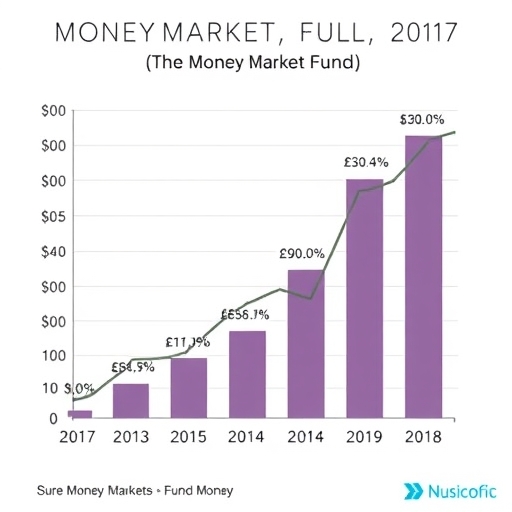
Conclusion
Money Market Funds represent a robust and versatile component of a well-rounded financial strategy, particularly for managing your short-term capital. By delivering a compelling combination of safety through high-quality, short-term investments, high liquidity for immediate access, and competitive returns that often surpass basic savings options, they empower investors like you to navigate economic shifts with confidence. While vigilance regarding their specific risks—especially the crucial absence of deposit insurance—is always prudent, a clear understanding of their structure and benefits positions Money Market Funds as an indispensable tool for achieving financial stability and meeting your short-term objectives. They are not designed for aggressive growth, but for the secure and productive management of your ready cash.
Disclaimer: This article is for informational and educational purposes only and does not constitute financial, investment, or tax advice. Always consult with a qualified financial advisor, tax professional, or legal expert before making any investment decisions. The value of investments can go down as well as up, and past performance is not indicative of future results.
Frequently Asked Questions (FAQ)
Q: Are Money Market Funds truly risk-free?
A: No, Money Market Funds are not entirely risk-free, though they are considered very low-risk. Unlike bank savings accounts, MMFs are generally not FDIC-insured, meaning your principal is not government-guaranteed against fund failure or issuer defaults. They are subject to interest rate risk, inflation risk, and a small degree of credit risk and market liquidity risk. However, they are designed for capital preservation and are significantly less volatile than stock or bond funds.
Q: How do Money Market Funds differ from High-Yield Savings Accounts (HYSAs)?
A: The primary difference lies in their structure and insurance. HYSAs are bank deposit accounts, which means they are FDIC-insured (up to limits) and your principal is guaranteed. MMFs, on the other hand, are investment funds that pool money to buy short-term debt instruments and are not FDIC-insured. While both offer competitive yields and high liquidity, MMFs typically have slightly higher yield potential in rising rate environments due to their investment nature, but with a marginally higher risk profile compared to FDIC-insured HYSAs.
Q: Can I lose money in a Money Market Fund?
A: While rare, it is possible to lose money in a Money Market Fund, an event often referred to as “breaking the buck” (where the Net Asset Value falls below its stable $1 per share). This happened notably during the 2008 financial crisis. Regulatory reforms since then have aimed to significantly reduce this risk, particularly for government and retail MMFs. However, institutional prime MMFs may still implement liquidity fees or redemption gates in extreme market stress. Generally, for most retail investors, MMFs are considered a very safe place for short-term cash, but the absence of deposit insurance means the risk is not zero.


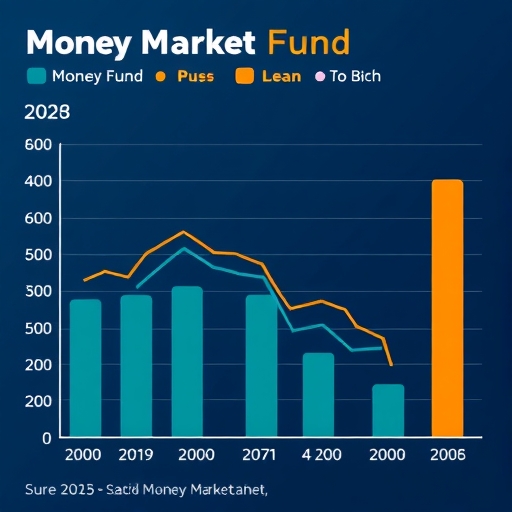
No responses yet